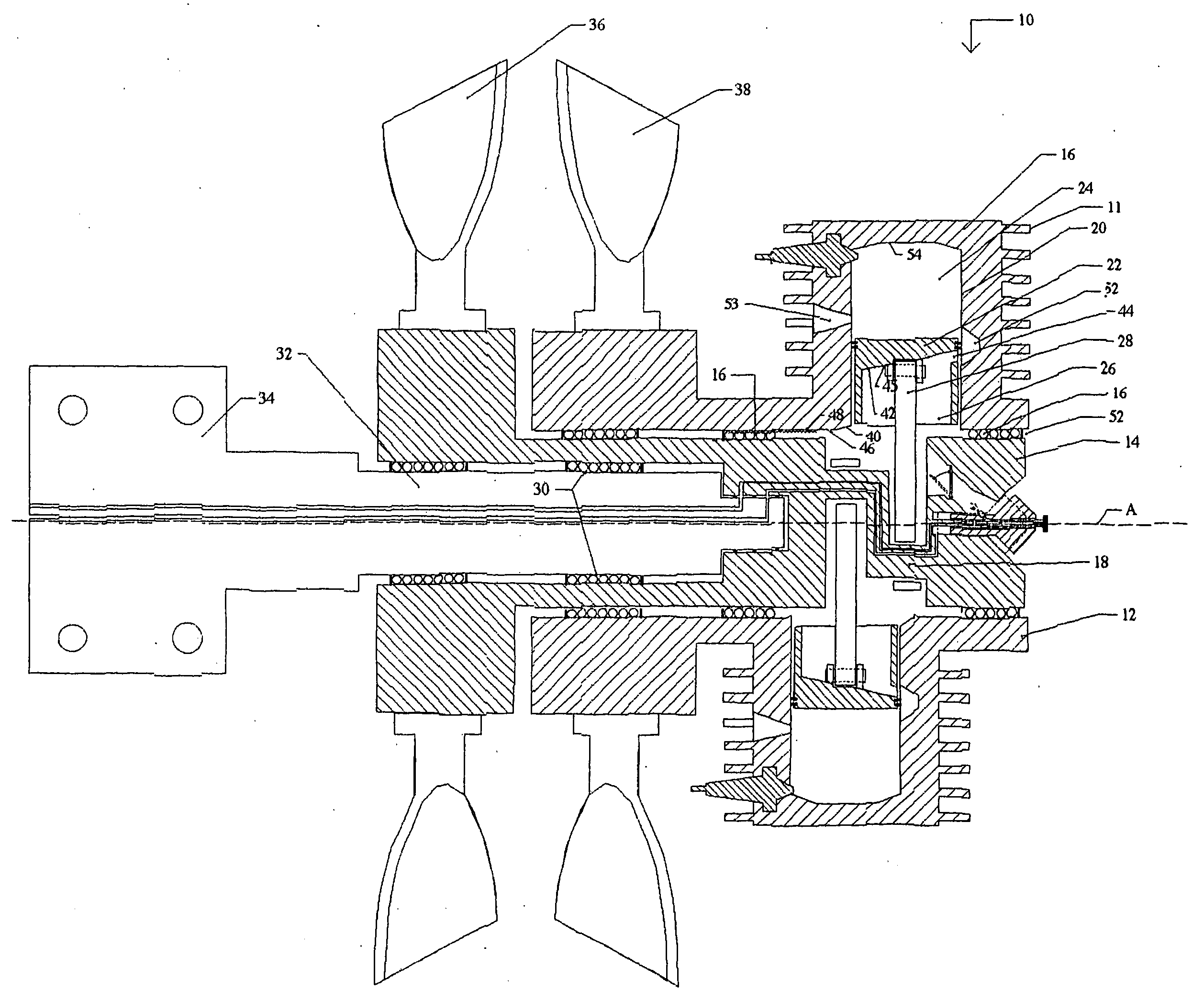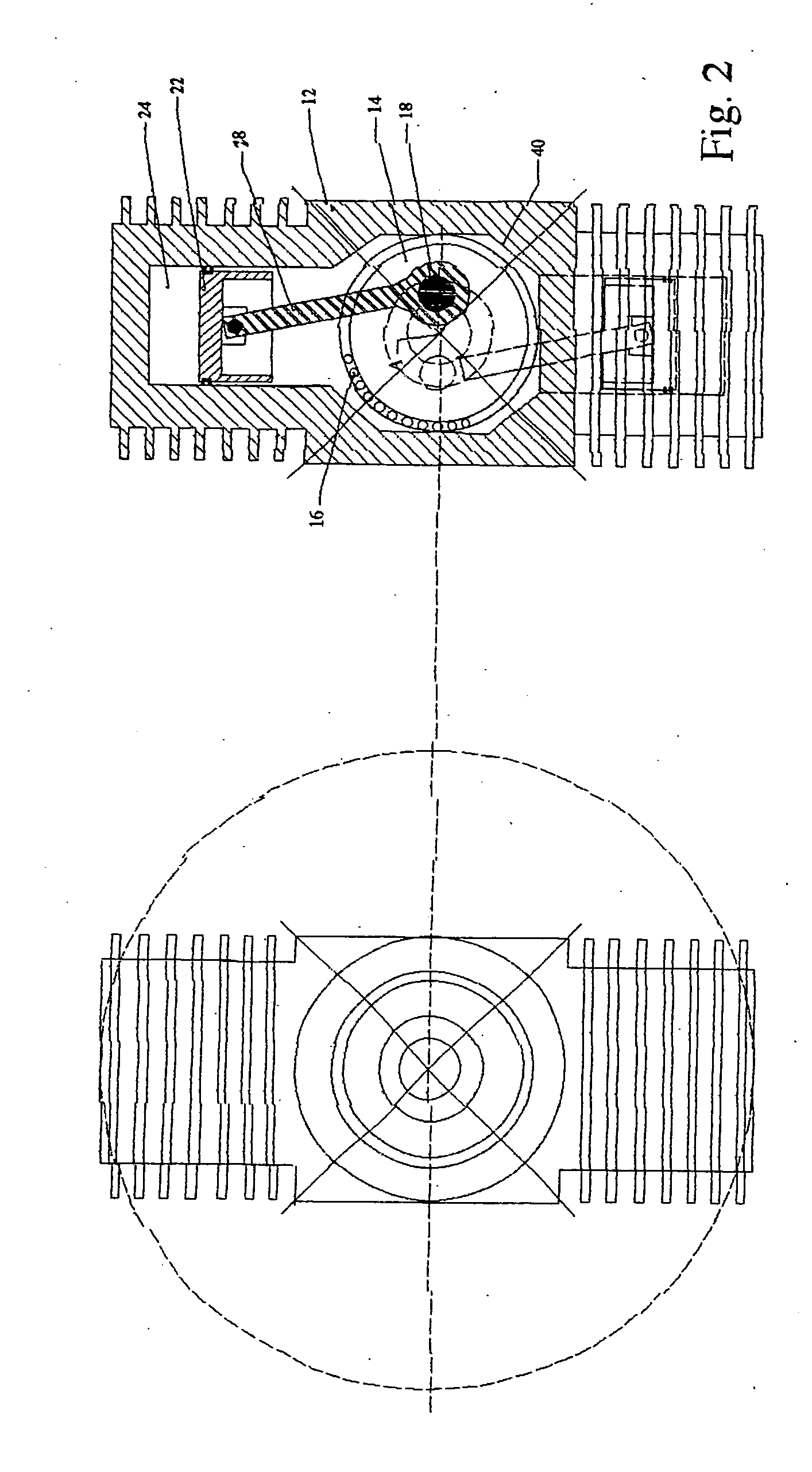Two-cycle engine for counter-rotation especially for aviation applications
a technology of two-cycle engines and aviation applications, applied in the direction of liquid fuel engines, vessel construction, marine propulsion, etc., can solve the problems of inherently unsuitable engines, affecting the practical implementation of the engine, and difficulty in accessing, so as to improve thrust performance, eliminate the transfer of torque to the aircraft, and inherently balanced output torque
- Summary
- Abstract
- Description
- Claims
- Application Information
AI Technical Summary
Benefits of technology
Problems solved by technology
Method used
Image
Examples
Embodiment Construction
[0043] This invention lies in the recognition that a two cycle engine with an output shaft can be modified to facilitate the counter-rotation of the engine's combustion chamber about the same axis as the output shaft with propellers advantageously mounted on both the engine's output shaft and housing, respectively.
[0044] The primary aspect of this invention resides in the recognition that 2 cycle engines, absent of a constant reservoir of crankcase oil, provide an opportunity to counter rotate the crankcase and combustion chambers without the negative effects of uncontrolled crankcase oil under centrifical force.
[0045] Careful control of transient fluids inside the crankcase, under centrifical force, can enhance the fuel / oil flow performance. In the present invention, all internal surfaces of the counter-rotating crankcase facing the axis of rotation are angled away from the central axis to promote the unrestricted flow of accumulated oil radially away from the output shaft axis a...
PUM
 Login to View More
Login to View More Abstract
Description
Claims
Application Information
 Login to View More
Login to View More - R&D
- Intellectual Property
- Life Sciences
- Materials
- Tech Scout
- Unparalleled Data Quality
- Higher Quality Content
- 60% Fewer Hallucinations
Browse by: Latest US Patents, China's latest patents, Technical Efficacy Thesaurus, Application Domain, Technology Topic, Popular Technical Reports.
© 2025 PatSnap. All rights reserved.Legal|Privacy policy|Modern Slavery Act Transparency Statement|Sitemap|About US| Contact US: help@patsnap.com



